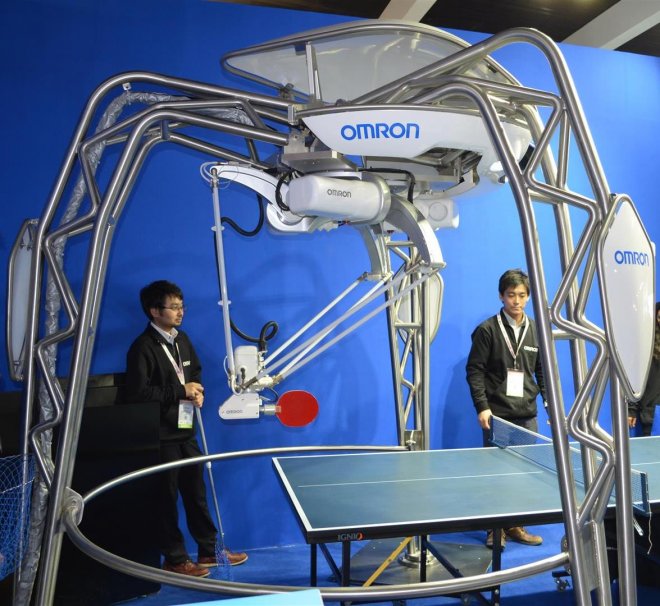
Wouldn't it be lovely if you had someone to just mentor your serve or your backhand before the weekend ping pong match with your friends? Well, if you are in Japan you can ask the help of the world's first robot table tennis player/tutor to share some tips with you. According to reports, it is doing better than the most human players out there and has a Guinness World Record to prove it.
The name of the world's first robot table table tennis player is FORPHEUS, which stands for Future Omron Robtotics Technology for Exploring Possibility of Harmonised aUtomation with Sinic theoretics.
OMRON Corporation's brain child's name is a coined term embodying OMRON's robot technologies based on its unique future prediction theory "SINIC theoretics". It is also a combination of "For" and "ORPHEUS (a bard in Greek mythology as a symbol of human creativity)", representing OMRON's attitude of bringing out human creativity and possibility, says the official site of the company.
FORPHEUS has been awarded the Guinness title due to its one of a kind technological intelligence and educational prowess. His mastery over the game is in lieu of its ability to gauge the position of a ball during a match at a surprising rate of 80 factors per second with the help of multiple cameras placed above the game table. It is capable of precise rotational speed estimation, giving a real time response with almost minimal margin of error.
This technology can be used to teach human players by showing the highly accurate trajectory prediction using the firm's proprietary prediction module. Thanks to its cutting-edge vision and motion sensors, the robot is easily capable to act as a coach. It motivates the player to acquire better timing, proper placement and better skills.
This is an advanced step to increase synchronization between machines and humans, as the project's lead developer Taku Oya says, that FORPHEUS was originally built to achieve the goal to harmonize humans and robots and this kind of future endeavours might be pivotal to change how we look at machines.
It might just be possible to create a separate echo-system of learning on further exploration. Taku Oya believes that the possibilities are huge, "Now, it is a human who teaches a robot how to behave or teach, but in the next 20 years, it may be possible that a robot teaches a robot or a robot develops a robot."









